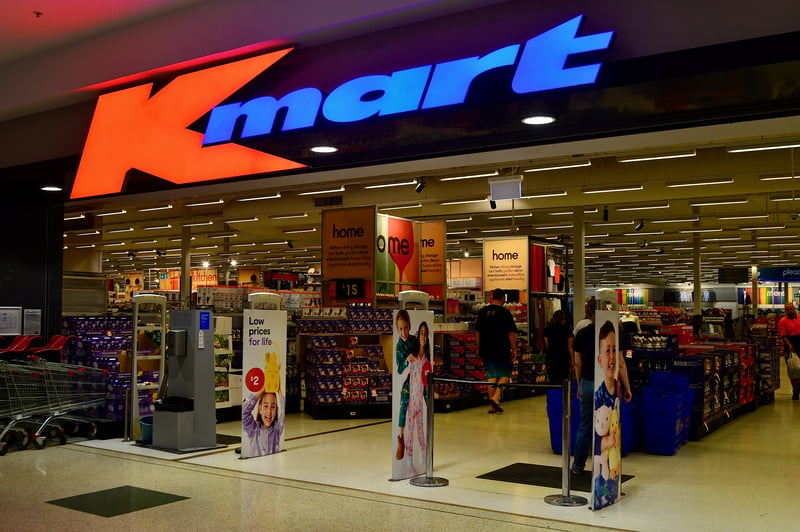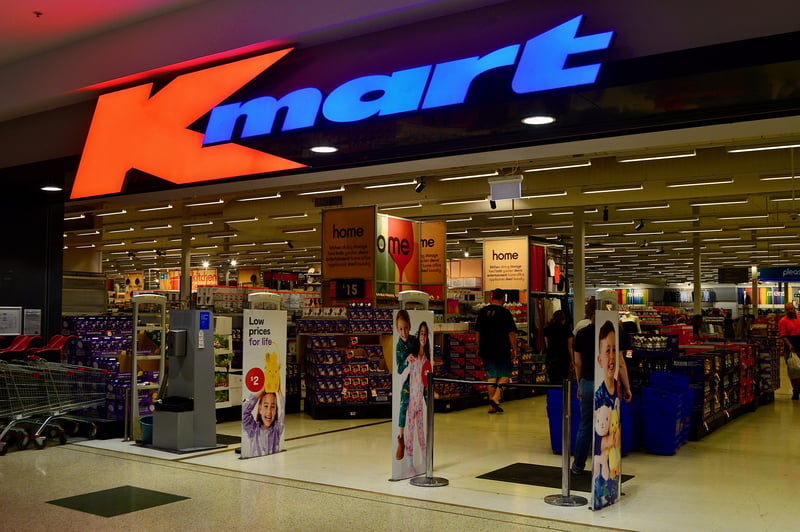
While Kmart in the U.S. is now a shadow of its former self—so much so that many consider it officially dead—the Kmart story in Australia and New Zealand is a whole different vibe. Kmart Australia Limited, a retail giant in its own right, is alive and well, with over 325 stores spread across Australia and New Zealand. It’s even expanding, all while the American version of the brand has faded into retail obscurity.
Here’s how Kmart pulled off this retail resurrection down under, and why it’s still winning hearts and wallets in the Southern Hemisphere.
The Kmart Australia Origins: Coles and Kresge’s Joint Venture
Kmart’s Aussie adventure began as a collaboration between the S.S. Kresge Company—the American retailer behind Kmart USA—and Australian retailer G.J. Coles & Coy (now known simply as Coles). The first store opened in Burwood East, a Melbourne suburb, in 1969, and right from the jump, it was a smash hit. On opening day alone, over 40,000 eager shoppers flocked to the store, forcing management to shut the doors early for safety reasons. Imagine that chaos!
As suburban sprawl boomed, so did Kmart. The formula was simple but effective: affordable prices and a wide variety of products, from homewares to fashion. It quickly became the go-to store for Aussies looking for deals. By the 1980s, Kmart was expanding across both Australia and New Zealand, securing its spot as a household name.
Kmart’s Golden Age in Australia and the Coles Era
Throughout the 1980s and 1990s, Kmart Australia rode high on its reputation for value and variety. The brand continued to grow, expanding into New Zealand in 1988. However, in 1978, Kresge (the American Kmart Corporation) sold its stake in the Australian operation, leaving Kmart Australia fully under the control of Coles, a company already well-established as a grocery powerhouse.
Kmart thrived under Coles, becoming an anchor tenant in shopping malls across both countries. It catered to a growing middle class, offering a mix of essentials, home goods, and everything in between. Still, by the early 2000s, the retail landscape was changing, and Kmart started to feel the pressure—much like its American counterpart. Competition was fierce, and Kmart Australia began to lose some of its sparkle.
The Wesfarmers Takeover: A Bold Turnaround
Enter Wesfarmers, one of Australia’s biggest conglomerates, which bought Coles Group in 2007. At first, there were rumors that Wesfarmers might sell Kmart or even convert some of its stores into Targets. But after assessing the potential, Wesfarmers decided to double down on Kmart instead, with a bold plan to reinvigorate the brand.
Under the leadership of Guy Russo, a former McDonald’s exec, Kmart underwent a dramatic transformation. Russo scrapped the brand’s reliance on big-name sales and eliminated well-known brands in favor of private-label products, allowing Kmart to offer even lower prices. The company also overhauled its stores, giving them a more modern, minimalist layout. Gone were traditional department divisions; instead, products were grouped by themes, making for a more curated shopping experience.
It was a gamble, but it paid off in a big way. By the mid-2010s, Kmart had staged one of the most impressive retail comebacks in Australia’s history. Sales skyrocketed, and Kmart emerged as a must-visit destination for shoppers looking for trendy homewares, affordable fashion, and a streamlined shopping experience.
A New Chapter: Kmart Buys Its Own Name
In 2017, Wesfarmers purchased the rights to the Kmart brand name in Australia and New Zealand for $100 million, cutting ties with the American parent company. This move ended a long-standing licensing agreement between Coles (Kmart Australia’s former owner) and Sears (which owned Kmart in the U.S.). With complete control over the Kmart name, the Australian division was free to chart its own course, and that’s exactly what it did.
Kmart doubled down on its successful strategy of offering low-priced, on-trend home goods and fashion. By 2020, the company was thriving, even converting some Target stores into Kmart locations to expand its footprint further.
Why Kmart Down Under Is Still a Winner
Unlike its U.S. counterpart, Kmart in Australia and New Zealand has managed to stay relevant by constantly adapting to changing consumer tastes. The brand’s pivot away from well-known name brands to its own in-house labels gave it a competitive edge, allowing it to keep prices low while offering trendy, well-designed products.
The brand also stayed ahead of the curve by cutting back on departments that were no longer popular, like DVDs and electronics, and focusing on growing categories like homewares and children’s toys. They even overhauled their store layout—moving the cash registers to the middle of the store to improve customer flow.
And while Kmart stores in the U.S. continued to shutter, with only a handful still open, Kmart in Australia has stayed robust. The company has even rebranded some stores as “K Hub” locations in smaller, rural areas, keeping the brand accessible across all demographics.
The Future of Kmart in Australia and New Zealand
As of 2024, Kmart remains a dominant force in the Australian and New Zealand retail markets. It has expanded its reach, with new store openings in cities like Dunedin, New Zealand, and revamped distribution centers. Plus, the brand has streamlined operations with Target, running the two under one umbrella while keeping their identities distinct.
The U.S. Kmart may be gone, but its legacy lives on in a vibrant and much-loved version of the brand thriving on the other side of the world. As long as Aussies and Kiwis continue to flock to Kmart for their affordable home makeovers and wardrobe upgrades, this retail giant looks poised to stick around for a long time to come.

